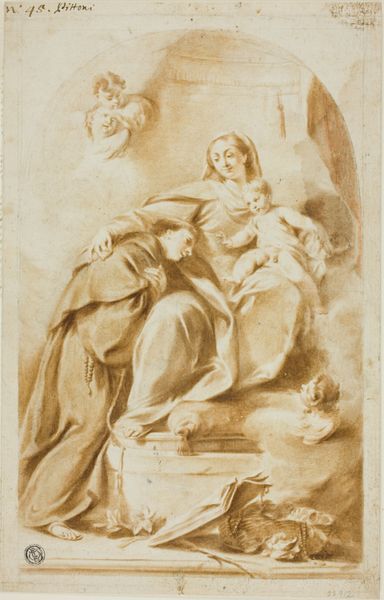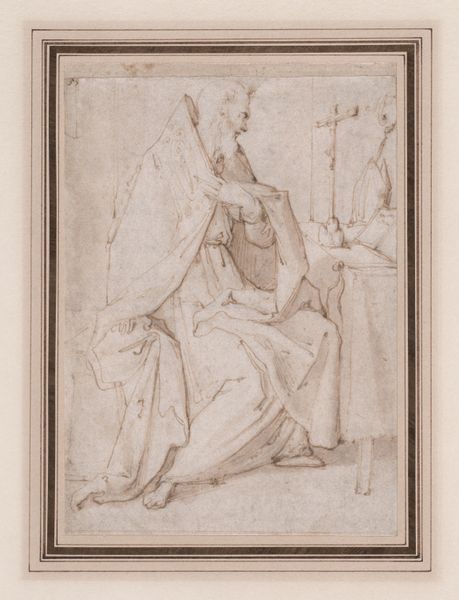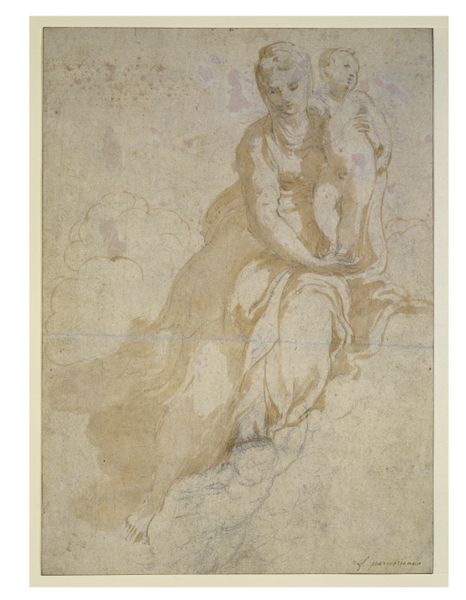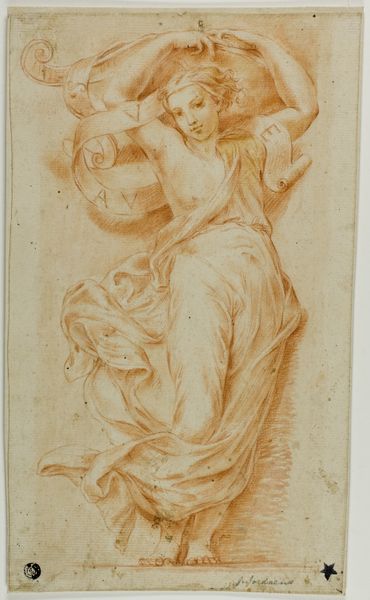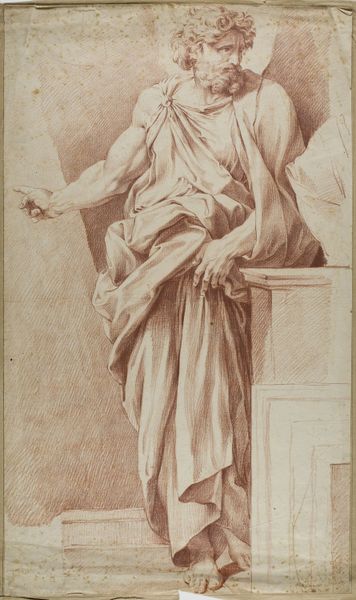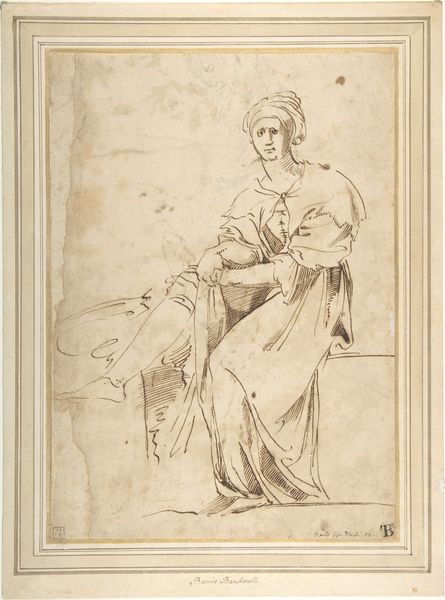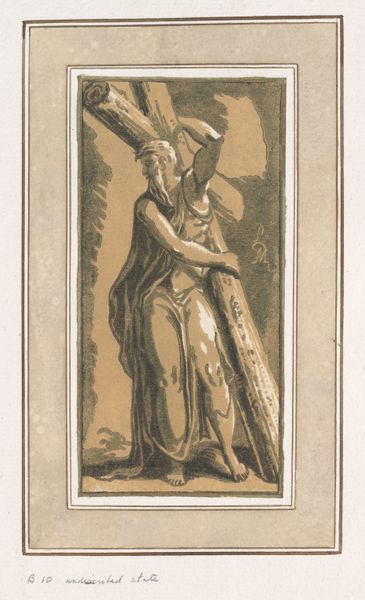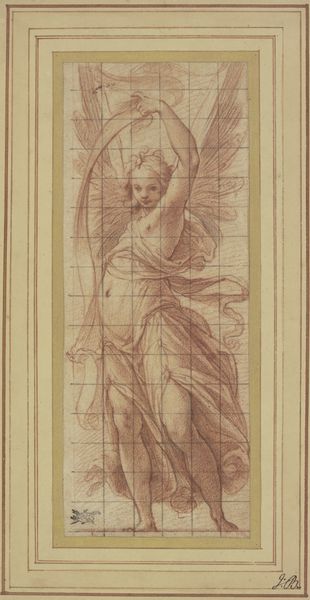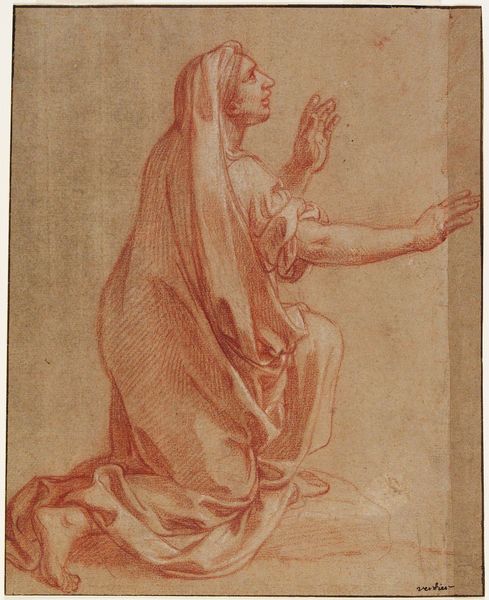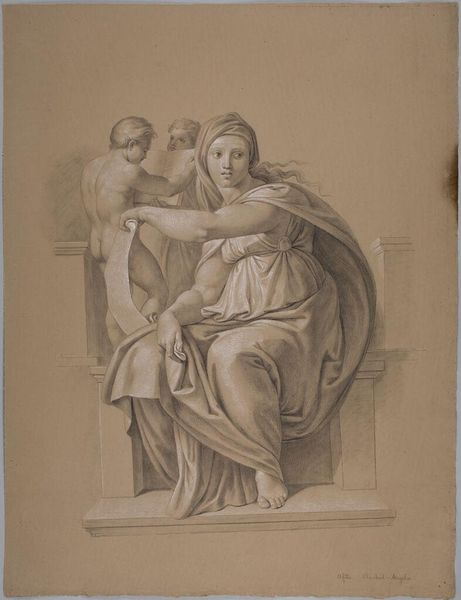![Fortitude (Study for the "Cabinet du roi" [King's Study]) by Francesco Primaticcio](/_next/image?url=https%3A%2F%2Fd2w8kbdekdi1gv.cloudfront.net%2FeyJidWNrZXQiOiAiYXJ0ZXJhLWltYWdlcy1idWNrZXQiLCAia2V5IjogImFydHdvcmtzL2YwMGUyNmMzLWY2MjMtNGY1Ni05ODhkLTc3ZDY1YTEwMTJmNS9mMDBlMjZjMy1mNjIzLTRmNTYtOTg4ZC03N2Q2NWExMDEyZjVfZnVsbC5qcGciLCAiZWRpdHMiOiB7InJlc2l6ZSI6IHsid2lkdGgiOiAxOTIwLCAiaGVpZ2h0IjogMTkyMCwgImZpdCI6ICJpbnNpZGUifX19&w=3840&q=75)
Fortitude (Study for the "Cabinet du roi" [King's Study]) 1541 - 1545
0:00
0:00
drawing, print, paper, charcoal
#
drawing
# print
#
charcoal drawing
#
figuration
#
paper
#
oil painting
#
charcoal
#
history-painting
#
academic-art
#
italian-renaissance
#
nude
Dimensions: 219 × 152 mm
Copyright: Public Domain
Editor: This is Francesco Primaticcio's "Fortitude (Study for the 'Cabinet du roi' [King's Study])", created between 1541 and 1545, and it's currently held at The Art Institute of Chicago. It's a drawing, likely charcoal on paper, with a really lovely warm tone. The figure's pose feels both classical and a bit melancholic. What are your thoughts on this piece? Curator: Well, given its status as a study for the "Cabinet du roi," we have to consider its intended function within a program of royal self-representation. How does the allegorical figure of Fortitude, as depicted here, contribute to the construction of an image of the French monarchy? Is it about power, resilience, or perhaps even the stoicism required to rule? Editor: That’s a fascinating perspective! I was mainly thinking about the figure itself. I didn't immediately think about the larger context of royal propaganda. How did images like this one function within the court at the time? Curator: Consider the dissemination of imagery at court. A drawing like this, especially if transformed into a print, would have circulated among artists, patrons, and even foreign dignitaries. What message did this careful construction of royal virtue project, both internally to the French court and externally to the rest of Europe? Editor: So, it wasn’t just about aesthetic beauty, but also about actively shaping perceptions of the French crown. That's a great point. I guess the placement of “Fortitude” in the King's study implies that the King is someone who holds or represents that trait. Curator: Exactly. The placement is critical. Also, what’s really interesting is the use of the nude. Throughout history, it has been tied to power or idealized strength and beauty. The artist here ties fortitude into a historical canon. Editor: I see it now. Thinking about the historical function really reframes how I perceive the artwork itself. Thanks, that makes much more sense now! Curator: Absolutely. And it’s a great reminder that artworks rarely exist in a vacuum. Examining their historical and political context can profoundly enrich our understanding.
Comments
No comments
Be the first to comment and join the conversation on the ultimate creative platform.


